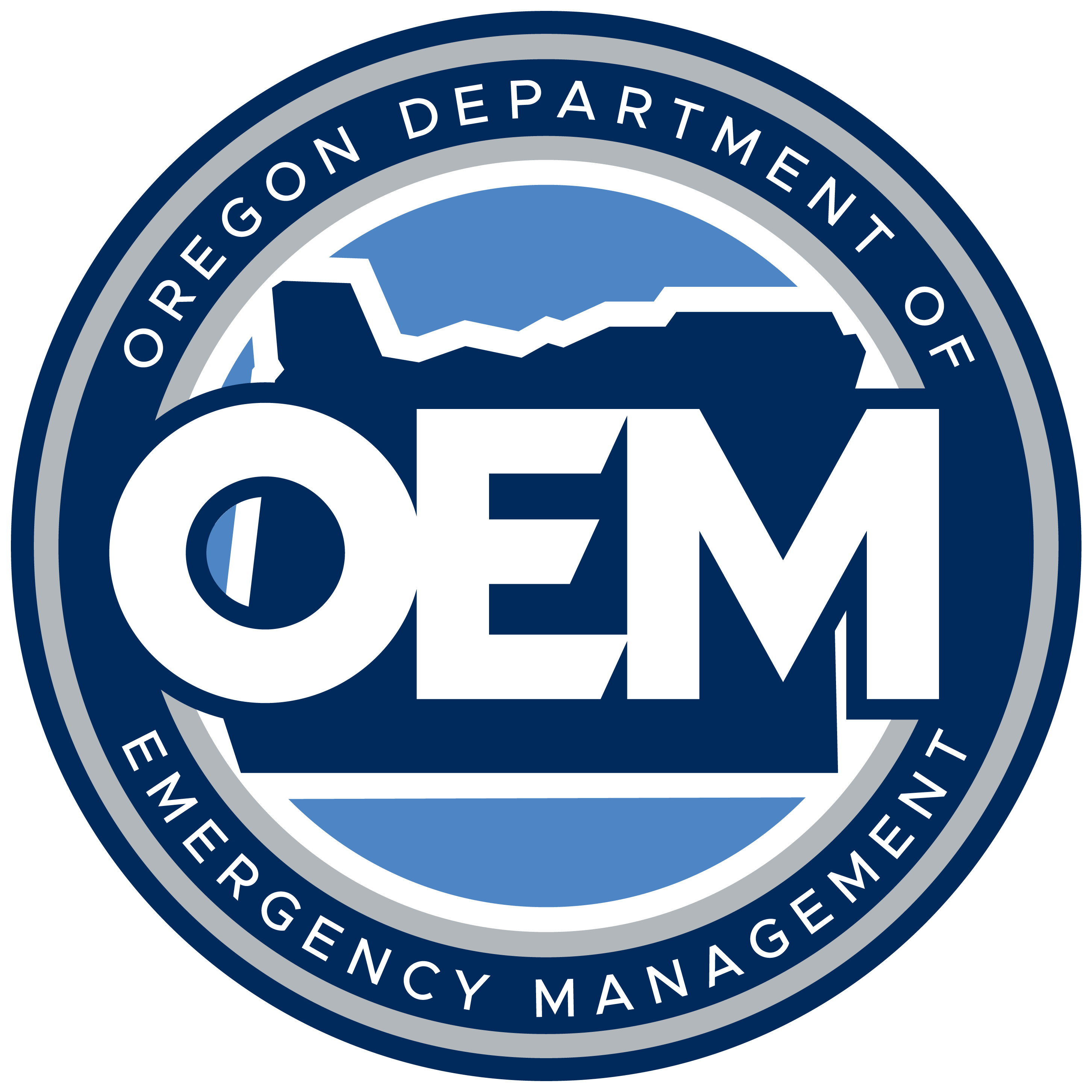- ▾ Other ShakeOuts ▾
- Alaska
- American Samoa
- Arizona
- British Columbia
- California
- Central U.S. (AL AR IA IL IN KS KY LA MO MS NE OH OK TN)
- CNMI
- Colorado
- Guam
- Hawaii
- Idaho
- Japan
- Montana
- Nevada
- New Mexico
- New Zealand
- NorthEast U.S. (CT MA ME NH NJ NY PA RI VT)
- Oregon
- Puerto Rico
- Quebec & Eastern Ontario
- SouthEast U.S. (DC DE FL GA MD NC SC VA WV)
- Texas
- Upper MidWest U.S. (MI MN ND SD WI)
- U.S. Virgin Islands
- Utah
- Washington State
- Wyoming
- Yukon
- Other Countries

Why Should You Participate?
While the potential earthquake hazards depend upon your location, you could be anywhere when an earthquake strikes- at home, at work, at school or even on vacation.
What we do now will determine our quality of life after our next big earthquake. Are you prepared to survive and recover quickly?
The Great Oregon ShakeOut is an annual opportunity to practice how to be safer during big earthquakes: "Drop, Cover and Hold On." The ShakeOut has also been organized to encourage you, your community, your school, or your organization to review and update emergency preparedness plans and supplies, and to secure your space in order to prevent damage and injuries.
Learn more below, or read answers to frequently asked questions.
Benefits
Register today so that you or your organization will:
- Be counted in the largest-ever earthquake drill in Oregon!
- Be listed with other participants in your area (Optional)
- Be an example that motivates others to participate & prepare
- Be updated with ShakeOut news and preparedness tips
- Have peace of mind that you, your family, your co-workers and millions of others will be better prepared to survive and recover quickly from our next big earthquake!
EARTHQUAKE HAZARDS
Oregon lies at a convergent continental boundary where two tectonic plates are colliding. The Cascadia Subduction Zone is actually a 600 mile long earthquake fault stretching from offshore northern California to southern British Columbia. This fault builds up stress for hundreds of years as the Juan de Fuca and North America Plates push against each other. Eventually, the two plates rip apart, creating some of the largest earthquakes and tsunamis on earth. Where the Juan de Fuca oceanic plate and the North American continental plate meet is called a subduction zone, because the denser Juan de Fuca Plate is being pulled under North America. The Juan de Fuca Plate is moving to the northeast at about an inch a year as the North American Plate moves west. The Oregon coastline is actually bulging upward from the two plates pushing against each other.
There are over 1000 earthquakes over magnitude 1.0 in Washington and Oregon every year, with at least two dozen being large enough to be felt. Approximately 17 people have lost their lives due to earthquakes in the Pacific Northwest. Since 1872, there have been 20 damaging earthquakes in Washington and Oregon. The Pacific coast poses special risk from tsunamis associated with a Cascadia Subduction Zone earthquake. In addition to Subduction zone earthquakes, Oregon is also susceptible to crustal earthquakes. The two largest earthquakes in recent years in Oregon, Scotts Mills, (magnitude 5.6) and the Klamath Falls, main shocks (magnitude 5.9 and magnitude 6.0) of 1993 were crustal earthquakes.
WHY DROP, Cover, and Hold On?
Why is it important to do a Drop, Cover, and Hold On drill? To react quickly you must practice often. You may only have seconds to protect yourself in an earthquake, before strong shaking knocks you down--or drops something on you. Practicing helps you be ready to respond.
- If you are inside a building, move no more than a few steps, then Drop, Cover and Hold On:
- DROP to the ground (before the earthquake drops you!),
- Take COVER by getting under a sturdy desk or table, and
- HOLD ON to it until the shaking stops.
- If you are outdoors when the shaking starts, you should find a clear spot away from buildings, trees, streetlights, and power lines, then Drop, Cover and Hold On. Stay there until the shaking stops.
- If you are driving, pull over to a clear location, stop and stay there with your seatbelt fastened until the shaking stops. Once the shaking stops, proceed with caution and avoid bridges or ramps that might have been damaged.
Ground shaking during an earthquake is seldom the cause of injury. Most earthquake-related injuries and deaths are caused by collapsing walls and roofs, flying glass and falling objects. It is extremely important for a person to move as little as possible to reach the place of safety he or she has identified because most injuries occur when people try to move more than a short distance during the shaking.
Look around you now, before an earthquake. Identify safe places such as under a sturdy piece of furniture or against an interior wall in your home, office or school so that when the shaking starts you can respond quickly. An immediate response to move to the safe place can save lives. And that safe place should be within a few steps to avoid injury from flying debris.
Further information:





